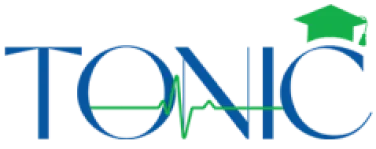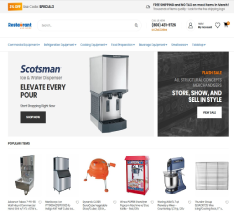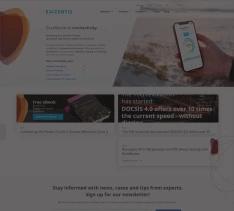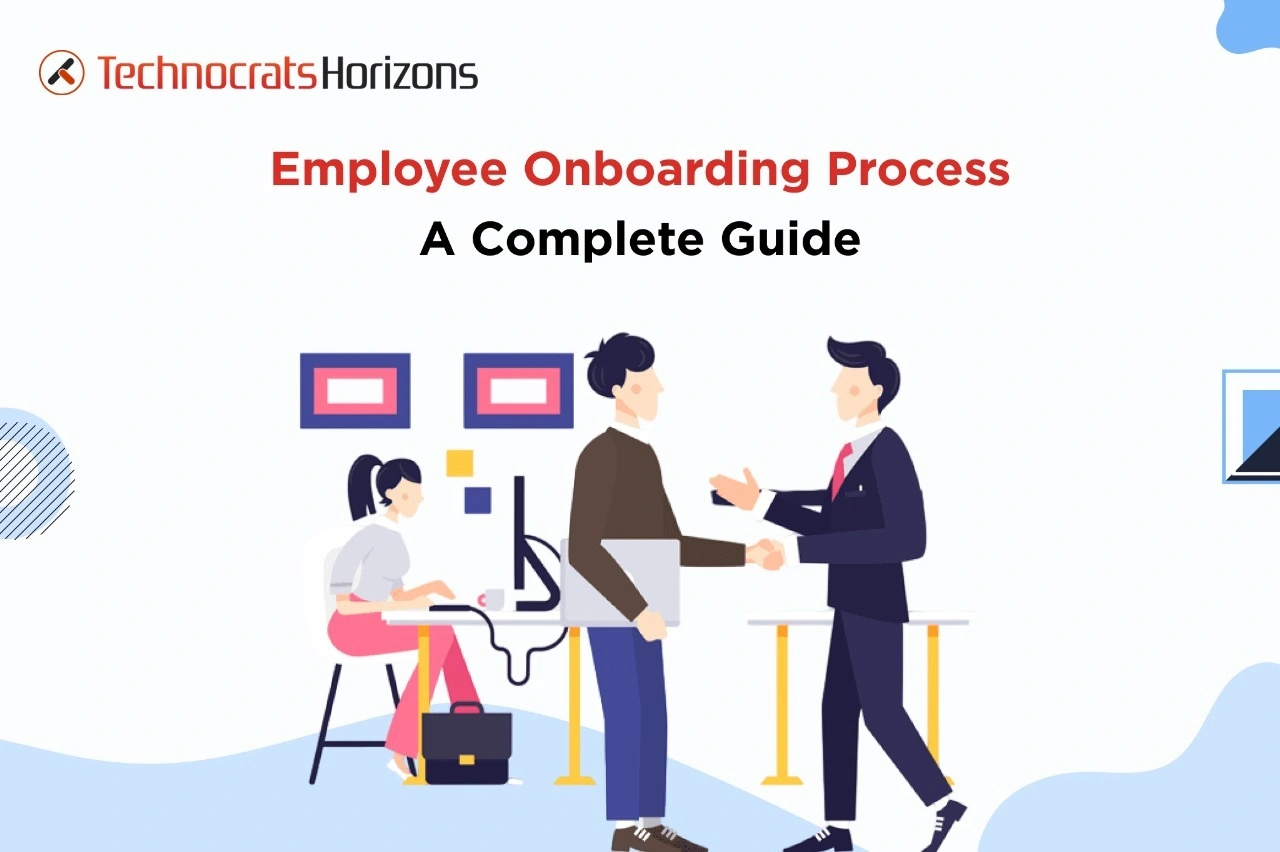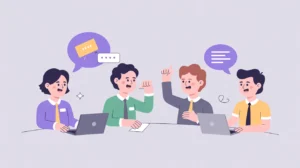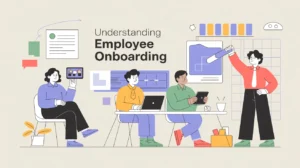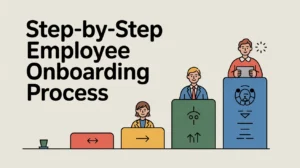“The employee onboarding process involves making newly hired employees fit into their new roles. This involves making them completely aware of their new roles and responsibilities, so they can deliver productive outcomes. A well-structured employee onboarding process matters a lot as it eventually helps in enhancing organizational growth.”
First impressions shape future perceptions. And this holds true for the employee onboarding process.
New employees are always filled with fresh energy and full of excitement for their new job roles. However, the first day excitement can easily get lost under the pile of paperwork and minimal guidance.
Result? Low employee productivity, which eventually impacts the organization’s growth. This even sometimes forces the new hires to leave the organization.
This is why well-organized employee onboarding becomes essential. Employee onboarding process is a crucial aspect that silently helps organizations boost employee productivity, retention rates, and overall organization growth.
So, how to ensure a smooth and structured onboarding process?
Well, this blog will give you the perfect answer. In this blog, you will have detailed insights about every aspect that builds a strong employee onboarding process.
Understanding Employee Onboarding
Employee onboarding is the process to help newly hired employees integrate well into their new jobs. It usually involves activities like orientation, team integrations, paperwork, and training for their specific role.
The onboarding process is more than just an administrative formality to make employees feel comfortable. The main goal of this process is to:
- Strategically integrate new employees into the company’s culture
- Make them aware of their job roles and responsibilities
- Provide them with all the essential tools and technologies they will need to work better
Because it is rightly said by Josh Bersin ( HR industry analyst & CEO of the Josh Bersin Company) that
“Onboarding is not a one-day orientation. Instead, it’s the foundation of your employee’s entire journey.”
Why Structured Onboarding Process Matters the Most
Disorganized hiring, like manual paperwork, scattered tools, and zero guidance about roles and responsibilities, often leaves the new employees confused and overwhelmed from day 1. And this eventually affects their retention rates and productivity.
Organizations following a well-organized onboarding process are likely to witness 69% higher 3-year employee retention.
So, you can imagine how a smooth and structured onboarding process plays a key role for both employee and organization well-being.
Simplify Onboarding with Our All-in-One LMS
Step-by-Step Employee Onboarding Process
As discussed earlier, a well-structured onboarding process is the root foundation for any organizational growth.
As it is popularly said,
“You only get one chance to make a first impression. So, make it count.”
A smooth onboarding process counts for engaging employees, which eventually helps in retaining them for years.
So, here’s how the well-organized onboarding process is.
1. Overcoming Employee Anxiety with Preboarding
Every new employee feels a little nervous about their new job, even after being highly experienced. Preboarding helps employees overcome that anxiety and feel confident on the very first day. This phase usually covers all the activities conducted between offer acceptance and the first day.
It usually includes:
- Sending a “Welcome to the Team” email
- Accomplishing all the digital paperwork via email
- Sharing the schedule for the first day or the first week
- Providing access to the essential company tools and systems
So, the preboarding phase actually acts as a confidant for new employees, especially the freshers.
2. Introducing Company Culture & Goals with Orientation
Employees are the growth drivers of every organization. And this becomes possible only when they are well-aware of your mission and working culture. That’s what the orientation phase does.
This phase involves:
- Introducing your mission, vision, and history through videos and PDFs
- Overview of HR policies
- Departmental structure
- Insights about collaboration tools
So, from the organization’s establishment to its goals, orientation makes the new hires aware of every edge of your organization.
Orientation is an important aspect of the employee onboarding process. However, new hires often overlook this phase, and this ultimately welcomes several issues like misunderstandings and low morale.
So, it becomes necessary for HR and L&D teams to conduct orientation programs in an engaging and interactive way through videos, documents, and quizzes.
Instead of switching back and forth to every content format, you can bring all onboarding content together by integrating it with your HRI systems.
And you can make it happen through the Technocrats’ AI-powered onboarding platform. The seamless integration of onboarding content with your HRM system saves your time and also helps in breaking down each policy and company goal effectively.
3. Upskilling New Hires Through Role-Based Training
Once your new hires are aware of the company policies and goals, it’s time to let them know what their role would be in achieving your desired goals.
This usually involves:
- Role responsibilities and your expectations from them
- Training on essential tools and software
- Introducing Key Performance Indicators (KPIs)
Most organizations often neglect this phase, considering it to be unimportant. However, this stage of the employee onboarding process provides clarity to the employees about their work.
To make role-based training simple and efficient, Technocrats’ onboarding solution creates personalized learning paths for each newly hired employee. AI analyzes and identifies each employee’s skill gaps based on their behavior and recommends training modules accordingly.
Upgrade Your Onboarding Process Today
4. Building Team Bonding with Cultural Assimilation
No matter how great your company’s strategic plan is, it will fall flat if the organizational culture is not supportive. That’s for what cultural assimilation is included in the employee onboarding process.
This stage includes:
- Team introductions
- Assigning onboarding mentors
- Including new employees in team events and rituals
Cultural assimilation actually helps in imparting a feeling of belonging in the new employees.
5. Educating About Ethics with Compliance Training
Just like it’s essential for employees to know your goals, compliance training is equally important to make them well-aware of the organization’s legal and ethical standards.
Compliance training involves:
- Harassment policies
- Data protection
- Job benefits and payroll documentation
While compliance training is an important aspect during the employee onboarding process, it might be challenging for businesses to stay updated about the latest norms. In such scenarios, opting for a white label LMS solution becomes highly beneficial.
6. Continuously Upskilling New Hires
The modern employee onboarding process is not just limited to the first 90 days. As employees play an essential role in driving organization success, it becomes essential for organizations to help employees continuously upskill themselves. And this becomes possible through timely development programs like:
- Career path planning
- Timely training programs
- Involvement in communities
This ensures the growth of your employees and organization never comes to a halt.
Final Say
Ensuring a smooth employee onboarding process is very crucial for organizational growth, as employees will be able to deliver effective results only when they have a proper understanding of the company’s goals and working culture.
By following a structured employee onboarding process involving preboarding, orientation, role-specific training, cultural assimilation, compliance training, and continuous development programs, you can easily onboard your new employees for powering successful growth.
Further, you can drive impactful results with the employee onboarding process when powered with AI. Contact us now to have a detailed exploration of how.
Automate Your Onboarding Workflow
Explore the Future of Learning
Contact us to discover how a next-gen LMS can transform training into real impact.


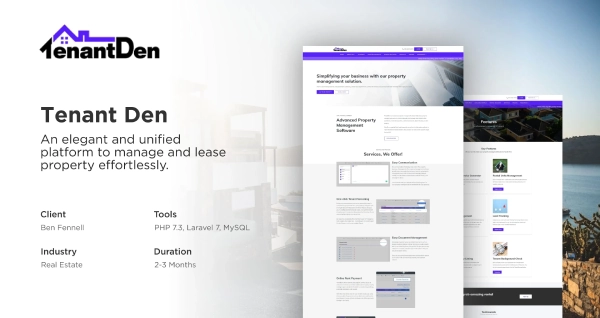

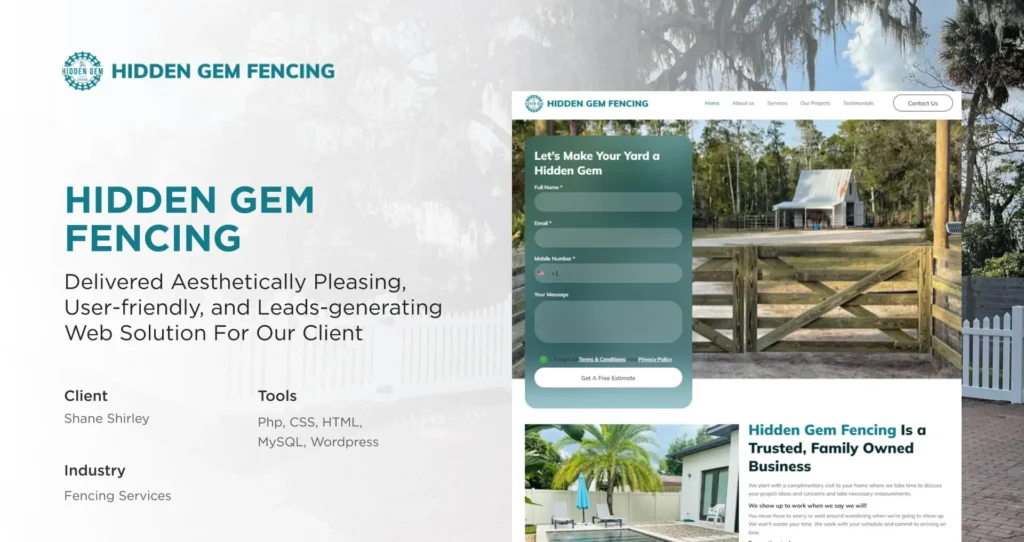
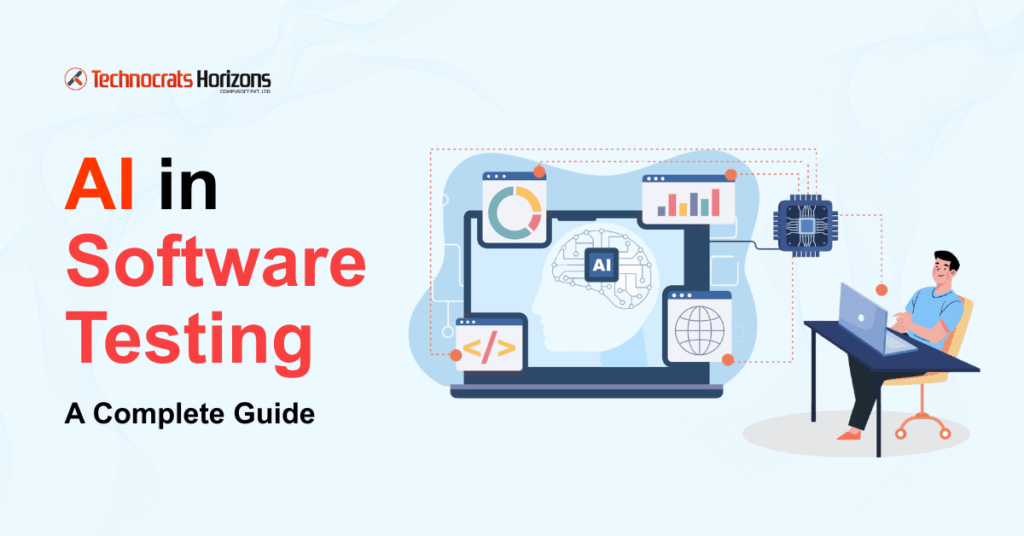
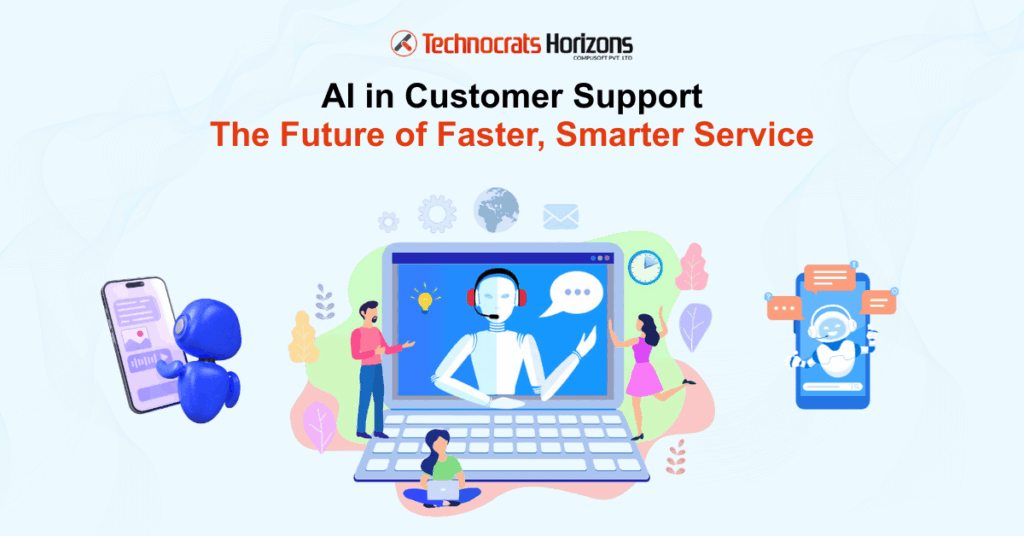

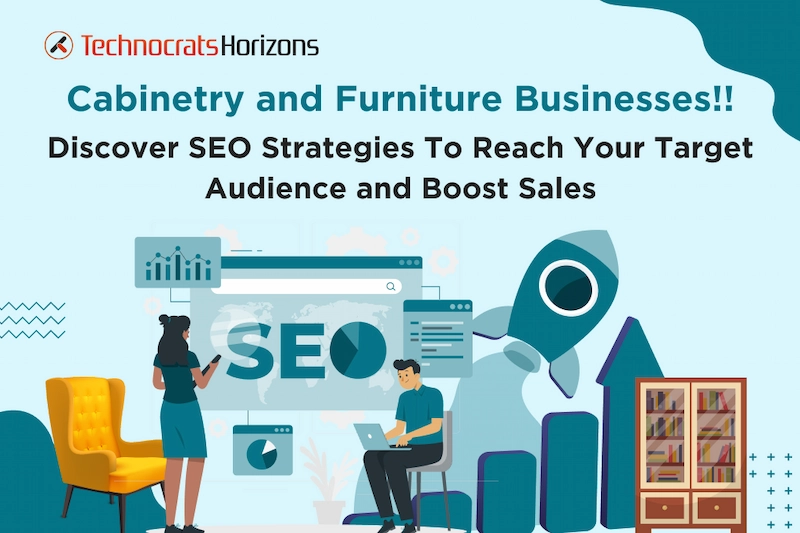
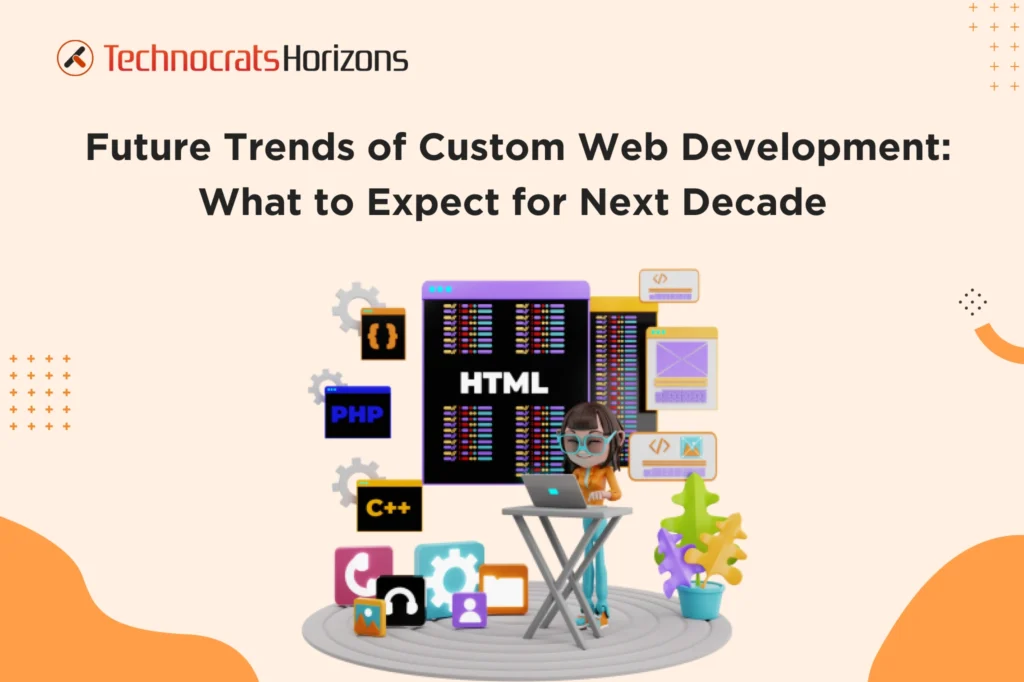
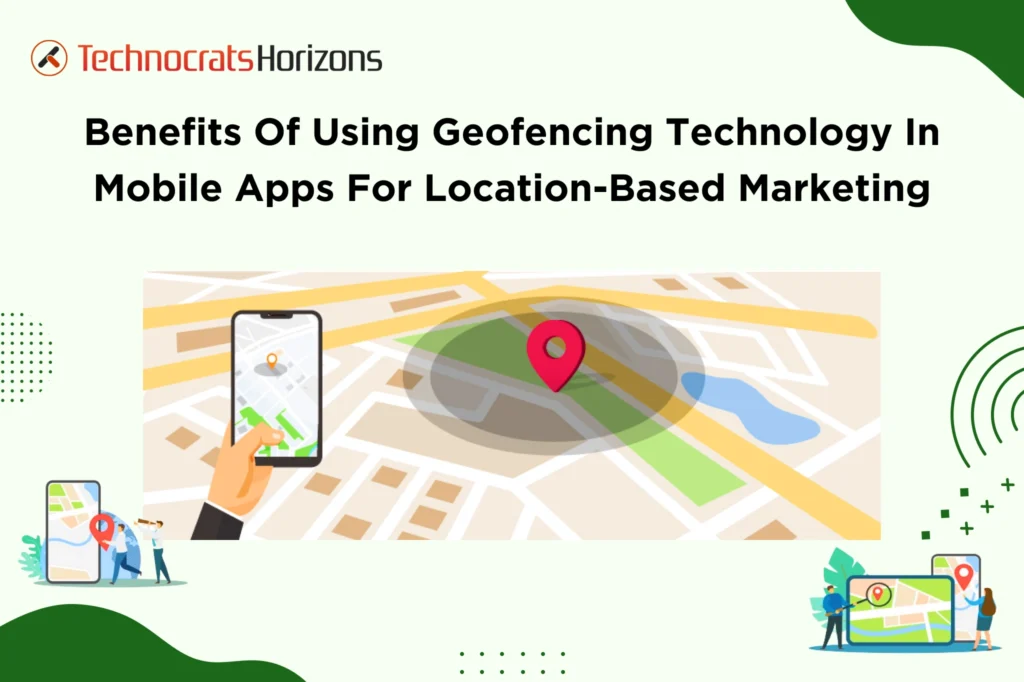
 Request a
Request a







